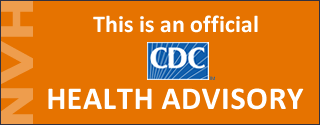Guidance on Measles during the Summer Travel Season
Distributed via the CDC Health Alert Network
June 21, 2023, 1:30 PM ET
CDCHAN-00493
Summary
As the summer travel season begins, the Centers for Disease Control and Prevention (CDC) is issuing this Health Alert Network (HAN) Health Advisory to remind clinicians and public health officials to provide guidance for measles prevention to international travelers and to be on alert for cases of measles. Guidance is also provided for people planning international travel. Measles (rubeola) is extremely contagious; one person infected by measles can infect 9 out of 10 of their unvaccinated close contacts. As of June 8, 2023, CDC has been notified of 16 confirmed U.S. cases of measles across 11 jurisdictions, with 14 (88%) linked to international travel. Based on current estimates, twice as many Americans are planning to travel internationally in 2023 compared with 2022. Many countries and popular travel destinations, such as London, England, have experienced measles outbreaks in recent years. The United States has seen an increase in measles cases during the first 5 months of 2023, with 16 reported cases compared with 3 in 2022 during the same period. Most of these cases were among children who had not received measles-mumps-rubella (MMR) vaccine. To prevent measles infection and spread from importation, all U.S. residents should be up to date on their MMR vaccinations, especially prior to international travel regardless of the destination.
Background
Measles is a highly contagious viral illness that typically begins with a prodrome of fever, cough, coryza (runny nose), and conjunctivitis (pink eye), lasting 2-4 days prior to rash onset. Measles can cause severe health complications, including pneumonia, encephalitis (inflammation of the brain), and death. The virus is transmitted by direct contact with infectious droplets or by airborne spread when an infected person breathes, coughs, or sneezes. Measles virus can remain infectious in the air and on surfaces for up to 2 hours after an infected person leaves an area. Measles is transmitted by contact with an infected person through coughing and sneezing. Infected people are contagious from 4 days before the rash starts through 4 days afterward. The incubation period for measles from exposure to fever is usually about 10 days (range 7 to 12 days), and from exposure to rash onset is usually about 14 days (range 7 to 21 days). Declines in measles vaccination rates globally during the COVID-19 pandemic have increased the risk of larger measles outbreaks worldwide, including in the United States.
Measles outbreaks are occurring in all World Health Organization (WHO) regions. Large and disruptive outbreaks (≥20 reported measles cases per million population during a 12-month period) have been reported in the European, African, Eastern Mediterranean, Western Pacific, and Southeast Asian regions during 2023. In the United States, measles is commonly associated with unvaccinated U.S. travelers returning from other countries where measles is actively circulating. International visitors and returning U.S. travelers can expose U.S. residents in transit and after arrival, leading to additional cases and the possibility for larger outbreaks.
Recommendations for Healthcare Professionals
- Ensure that all patients without other evidence of immunity, especially those planning international travel, are up to date on MMR vaccine and other recommended vaccines before their international travel.
- CDC recommends that all U.S. residents older than age 6 months who will travel internationally, without evidence of immunity, receive MMR vaccine prior to departure.
- Infants 6 through 11 months of age should receive one dose of MMR vaccine before departure. Infants who receive a dose of MMR vaccine before their first birthday should receive two more doses of MMR vaccine, the first of which should be administered when the child is 12 through 15 months of age and the second at least 28 days later.
- Children 12 months of age or older should receive two doses of MMR vaccine, separated by at least 28 days.
- Teenagers and adults without evidence of measles immunity should have documentation of two doses of MMR vaccine separated by at least 28 days.
- At least one of the following is considered evidence of measles immunity for international travelers: 1) birth before 1957, 2) documented administration of two doses of live measles virus vaccine (MMR, MMRV, or other measles-containing vaccine), or 3) laboratory (serologic) proof of immunity or laboratory confirmation of disease.
- Consider measles as a diagnosis in anyone with fever (≥101°F or 38.3°C) and a generalized maculopapular rash with cough, coryza, or conjunctivitis who has recently been abroad, especially in countries with ongoing outbreaks (e.g., India, Somalia, and Yemen).
- Be aware that some patients may develop a mild rash reaction in the three weeks following MMR vaccination, which does not typically require testing or public health intervention.
- Clinicians should notify their state or local health departments of any suspected or confirmed measles cases (via 24-hour Epi On Call contact list).
Recommendations for State and Local Health Departments
- State and local health departments have the lead in investigating measles cases and outbreaks.
- Measles is an immediately notifiable disease and should be reported promptly (within 24 hours) by the state health department to CDC (measlesreport@cdc.gov) and through the National Notifiable Disease Surveillance System (NNDSS).
- Establish measles case reporting within hospitals and to public health authorities.
- Record and report details about cases of measles, including adherence to recommended precautions and facility location(s) of index and secondary cases.
- If measles is identified, conduct active surveillance for any additional cases and facilitate transportation of specimens immediately to confirm diagnosis.
Recommendations for International Travelers
- Consult with your doctor several weeks before traveling abroad, regardless of your destination, to see if you or any dependents need MMR vaccine. You should be up-to-date on all routine vaccines, such as measles-mumps-rubella (MMR), tetanus, and flu. Depending on where you’re going and what activities you plan, other vaccines may be recommended.
- Two doses of MMR vaccine provide better protection (97%) against measles than one dose (93%). Getting MMR vaccine is much safer than getting measles, mumps, or rubella.
- At least one of the following is considered evidence of measles immunity for international travelers: 1) birth before 1957, 2) documented administration of two doses of live measles virus vaccine (MMR, MMRV, or other measles-containing vaccine), or 3) laboratory (serologic) proof of immunity or laboratory confirmation of disease
- You should plan to be fully vaccinated (two doses) at least 2 weeks before you depart.
- After international travel, you should watch for signs and symptoms of measles for 3 weeks after you return to the United States. If you or your child gets sick with a rash and a high fever, call your doctor. Tell them you traveled abroad and whether you or your child have received MMR vaccine.
- Before your next trip, check your destination and CDC’s Global Measles Travel Health Notice for more travel health advice, including where measles outbreaks have been reported.
For More Information
- International Travelers
- Healthcare and Public Health Professionals
The Centers for Disease Control and Prevention (CDC) protects people’s health and safety by preventing and controlling diseases and injuries; enhances health decisions by providing credible information on critical health issues; and promotes healthy living through strong partnerships with local, national and international organizations.
Department of Health and Human Services
HAN Message Types
- Health Alert: Conveys the highest level of importance about a public health incident.
- Health Advisory: Provides important information about a public health incident.
- Health Update: Provides updated information about a public health incident.
###
This message was distributed to state and local health officers, state and local epidemiologists, state and local laboratory directors, public information officers, HAN coordinators, and clinician organizations.
###

